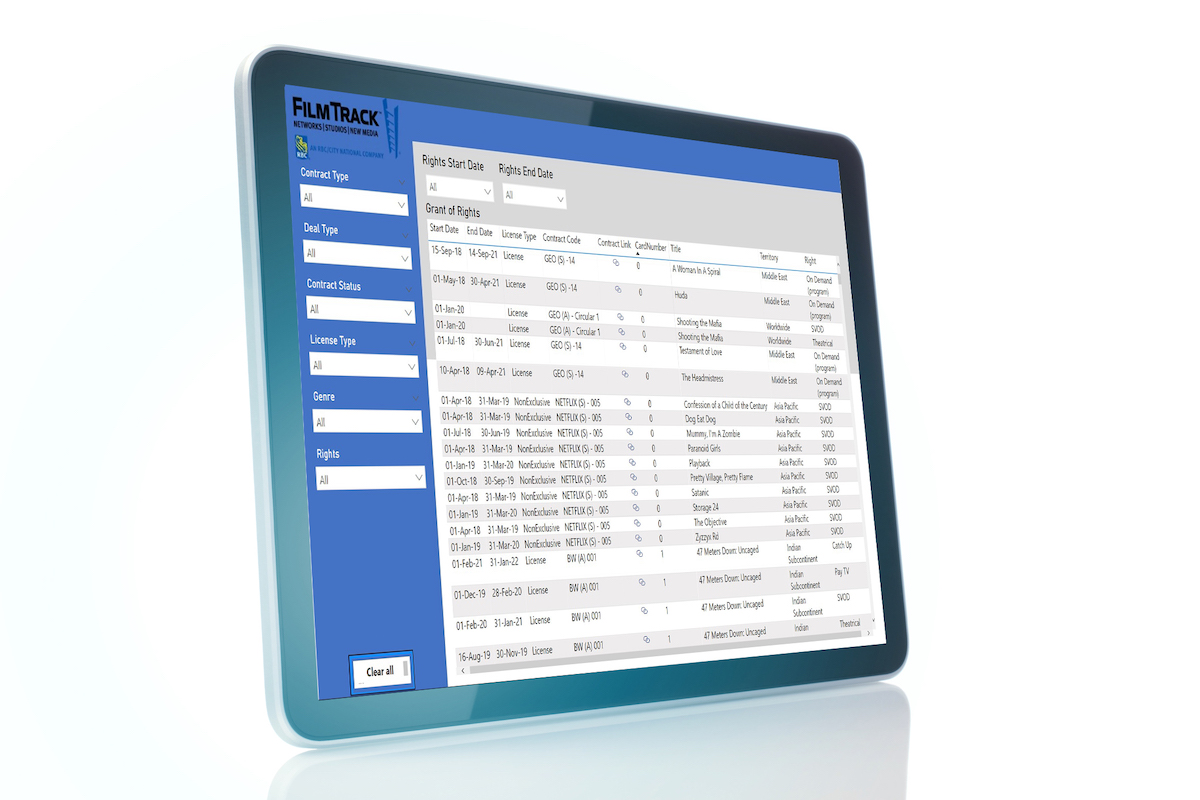The challenge for entertainment companies in managing rights is that new technology, multiple formats, and growing platforms have made things more complicated and multi-dimensional than ever. As a result, managing rights contracts across all media platforms has become highly complex.
In our world of numerous platforms and media services, standard industry metrics no longer serve as accurate measurements of performance and are unhelpful for negotiating deals, making deals, and tracking results.
In addition, due to increased content fragmentation, media companies need to find ways to quickly keep track of all their rapidly evolving content rights. While many used to rely on their home-grown management systems – usually involving Excel spreadsheets – the globalization of content and increasing complexities of content rights have made that format no longer viable.
In order for companies to plan more strategically, they must be able to accurately gauge the demand for their content. This requires that entertainment rights management now include ways to assess content performance across all platforms in every country, and that new metrics be considered.
Some critical metrics that your company should be tracking include:
1) Trends
Entertainment rights management will continually evolve, not only by riding the trends within the industry but also in its continuing reaction to behavioral changes prompted by the pandemic—both in how entertainment is now distributed and how consumers expect to access it.
Numerous trends will drive critical developments as the digital revolution reshapes the entertainment industry. For example, Deloitte’s 2022 Media & Entertainment Industry Outlook states:
“We will see the streaming video industry mature as metrics evolve beyond subscriber counts to lifetime customer value, and existing business models expand to find greater profitability amid global competition.”
These and other critical entertainment rights management trends require tracking to enable insight into growth opportunities.
2) Consolidation
Increasingly, it's not just about the ability to collect data but, notably, the power to cross-correlate it to gather insights. A rights management platform should provide automatic connections across all the data, regardless of the type or where it was generated in the stack. Rights management software allows automation to manage participations and residuals via consolidating multiple kinds of information in the system – film data with ERP, scheduling, residuals, etc. Best-practice systems house all the relevant data within an organization and serve as the "single source of truth" (SSOT) to reduce the risk of multiple versions of the same data set. This allows all data users to access the one official data set and work from that. An SSOT for observing data sets enables companies to quickly eliminate data silos and resolve issues.
3) Opportunities
Global digital rights management in media and entertainment was valued at USD 1.74 billion in 2020, and research indicates that it will grow at a compound annual rate (CAGR) of 16.5% from 2021 to 2028. Digital technology and the increase of high bandwidth internet networks are facilitating the opportunity to distribute media content to millions of users. In addition, to keep up with the demands of multi-channel viewing, content owners are now licensing partial TV seasons to video-on-demand (VOD) platforms – something that wasn’t routinely done even several years ago.
While traditional systems can’t account for this level of transparency, cloud-based rights management software can provide the tracking necessary to provide a bird’s eye view into all possible areas of content monetization. In addition, these systems analyze data to offer deeper granularity into various windows of opportunity, including territory, licensee, and medium.
4) Scalability
Rights management companies must track a wide range of factors, such as location, exclusivity, subscription type, device, format, channel, and timing window. Contracts for entertainment rights continue to become more complex due to varied measurements involving restrictions, catch-up, clips, exclusions, number of participants and expirations, and on-demand. As your catalog grows, the complexity involved in managing it follows suit.
An agile entertainment rights management system can support a company’s growth without adversely affecting performance or accuracy. Its modular nature allows the business to customize the solution to retain the initial functionality while enhancing it as the organization grows and the complexity of rights multiplies.
Effective rights management software allows companies to maximize all their intellectual property (IP) assets by incorporating new metrics and financial processes to calculate and track content profitability across platforms.
Want to Learn More About Metrics and How to Track Them?
FilmTrack provides unique tracking software allowing you to organize contracts, track rights, make timely payments, and identify opportunities in our increasingly complex industry. We provide our clients with an expanded offering of financial and payment services and software that allows you to competitively differentiate your business by running more efficiently and securely.



